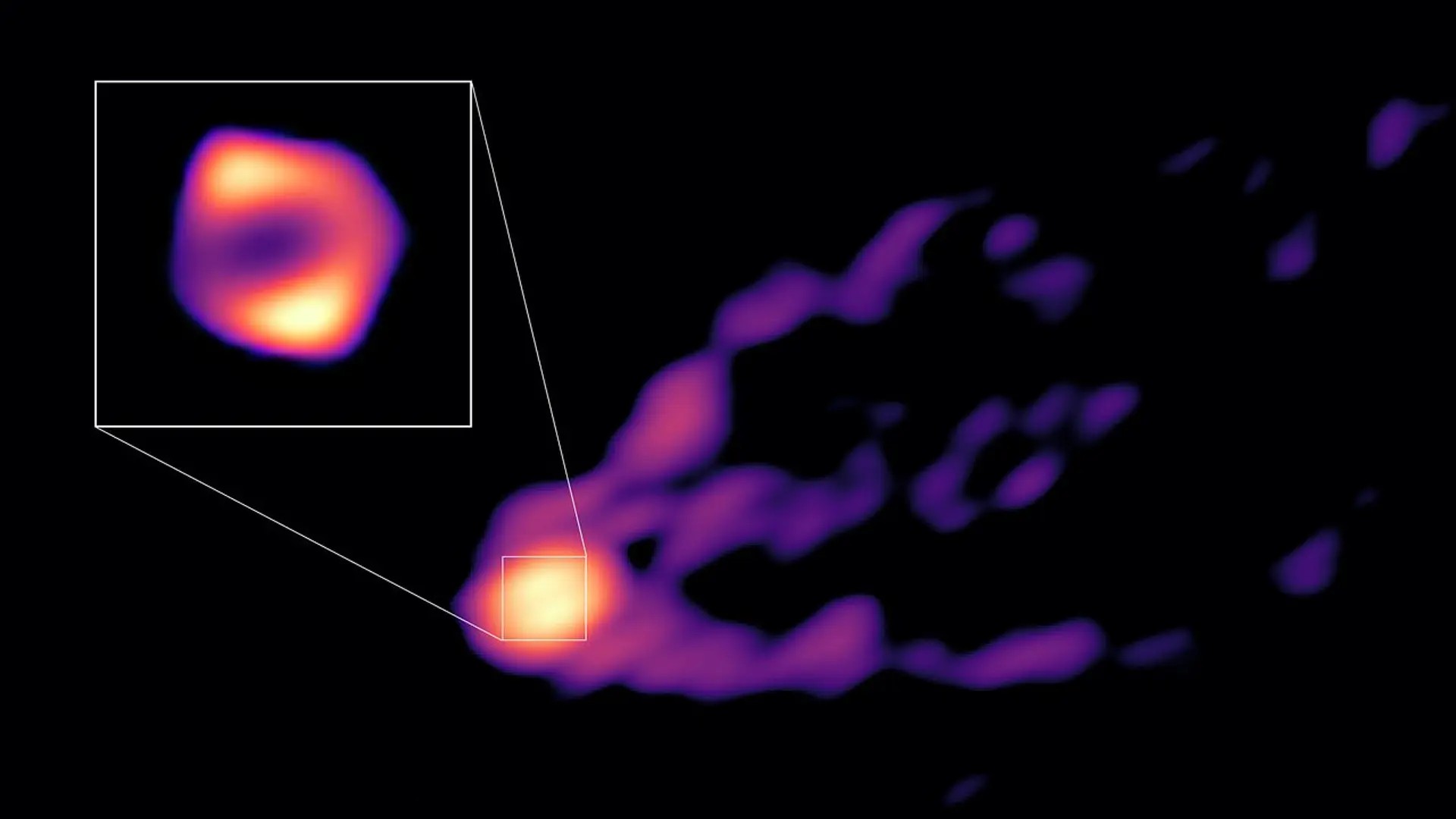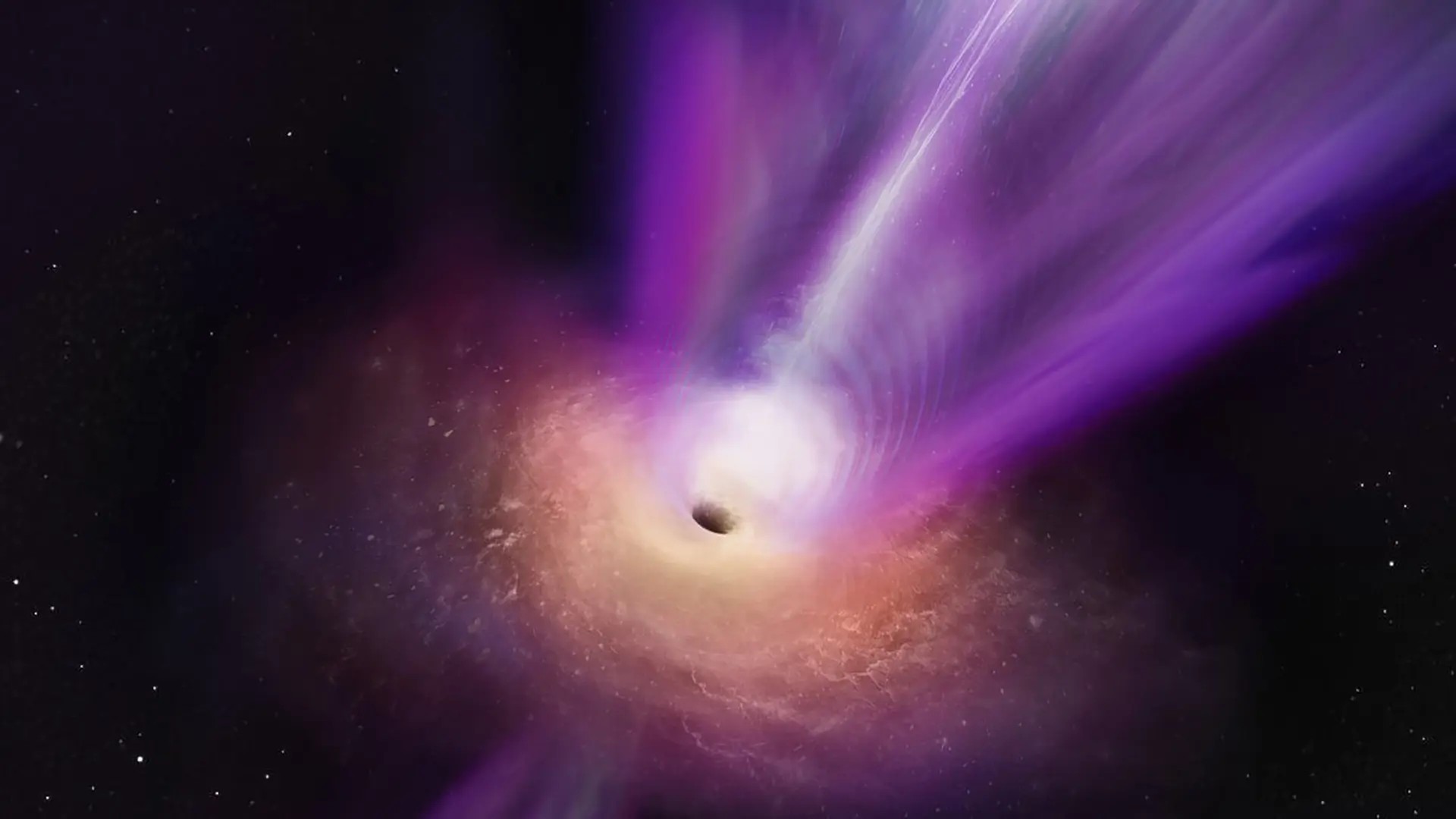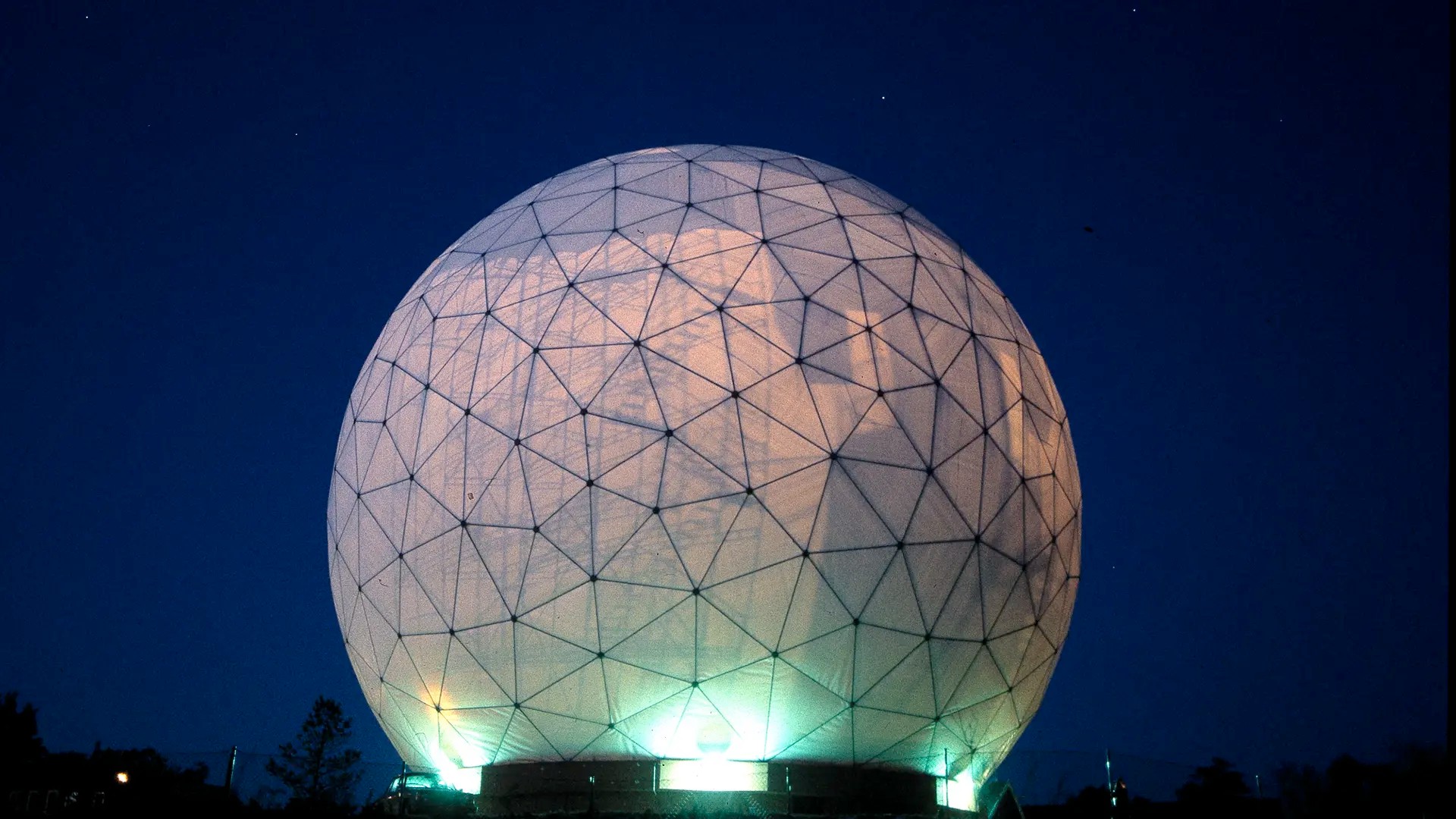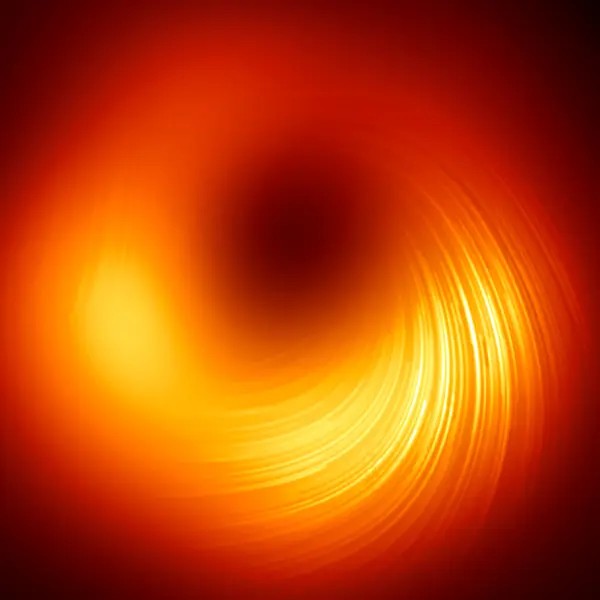
Chalmers scientists are part of an international team of astronomers which has for the first time imaged both the shadow of the black hole at the centre of the galaxy Messier 87 - and the powerful jet expelled from it. The observations were made by a global network of telescopes, including the 20-metre telescope in Onsala, Sweden. The new image helps astronomers understand how black holes can launch highly energetic jets.
Most galaxies harbour a supermassive black hole at their centre. While black holes are known for engulfing matter in their immediate vicinity, they can also launch powerful jets of matter that extend beyond the galaxies that they live in. Understanding how black holes create such enormous jets has been a long-standing problem in astronomy.
“We know that jets are ejected from the region surrounding black holes,” says Ru-Sen Lu from the Shanghai Astronomical Observatory in China, “but we still do not fully understand how this actually happens. To study this directly we need to observe the origin of the jet as close as possible to the black hole.”
The new image published today shows for the first time how the base of a jet connects with the matter swirling around a supermassive black hole.
The target is the galaxy M87, located 55 million light-years away in our cosmic neighbourhood, and home to a black hole 6.5 billion times more massive than the Sun.
Previous observations had managed to separately image the region close to the black hole and the jet, but this is the first time both features have been observed together.
“This new image completes the picture by showing the region around the black hole and the jet at the same time,” adds Jae-Young Kim from the Max Planck Institute for Radio Astronomy in Germany.
The image was made using a network of radio telescopes around the globe, including the 20-metre radio telescope at Onsala Space Observatory in Sweden. By forming a virtual telescope the size of the Earth, the network could discern very small details in the region around M87’s black hole.
Jun Yang, Onsala Space Observatory and Chalmers, is one of three Chalmers astronomers in the team behind the new image.
“The black hole in M87 was the first ever to be imaged by any telescope. Now we have a new image of this black hole and its surroundings, made using light of a different wavelength, with a different telescope network - including our own telescope in Onsala. It’s extremely exciting to be part of a global project that is breaking new ground like this”, he says.
The new image shows the jet emerging near the black hole, as well as as well as what scientists call the shadow of the black hole. As matter orbits the black hole, it heats up and emits light. The black hole bends and captures some of this light, creating a ring-like structure around the black hole as seen from Earth. The darkness at the centre of the ring is the black hole shadow, which was first imaged by the Event Horizon Telescope (EHT) in 2017. Both this new image and the EHT one combine data taken with several radio telescopes worldwide, but the image released today shows radio light emitted at a longer wavelength than the EHT one: 3.5 mm instead of 1.3 mm.
“At this wavelength, we can see how the jet emerges from the ring of emission around the central supermassive black hole,” says Thomas Krichbaum of the Max Planck Institute for Radio Astronomy.
The size of the ring observed by the GMVA network is roughly 50% larger in comparison to the Event Horizon Telescope image.
"To understand the physical origin of the bigger and thicker ring, we had to use computer simulations to test different scenarios,” explains Keiichi Asada from the Academia Sinica in Taiwan.
The results suggest the new image reveals more of the material that is falling towards the black hole than what could be observed with the EHT.
These new observations of M87’s black hole were conducted in 2018 with the GMVA, which consists of 14 radio telescopes in Europe and North America. In addition, two other facilities were linked to the GMVA: the Greenland Telescope and ALMA. ALMA consists of 66 antennas in the Chilean Atacama desert, and it played a key role in these observations. The data collected by all these telescopes worldwide are combined using a technique called interferometry, which synchronises the signals taken by each individual facility. But to properly capture the actual shape of an astronomical object it’s important that the telescopes are spread all over the Earth. The GMVA telescopes are mostly aligned East-to-West, so the addition of ALMA in the Southern hemisphere proved essential to capture this image of the jet and shadow of M87’s black hole.
“Thanks to ALMA’s location and sensitivity, we could reveal the black hole shadow and see deeper into the emission of the jet at the same time,” explains Lu.
Future observations with this network of telescopes will continue to unravel how supermassive black holes can launch powerful jets.
“We plan to observe the region around the black hole at the centre of M87 at different radio wavelengths to further study the emission of the jet,” says Eduardo Ros from the Max Planck Institute for Radio Astronomy. Such simultaneous observations would allow the team to disentangle the complicated processes that happen near the supermassive black hole. “The coming years will be exciting, as we will be able to learn more about what happens near one of the most mysterious regions in the Universe,” concludes Ros.
More about the research
This results are published in the paper "A ring-like accretion structure in M87 connecting its black hole and jet" by Ru-Sen Lu et al. in Nature (doi: 10.1038/s41586-023-05843-w).
The science team includes three astronomers from Chalmers: John Conway, Michael Lindqvist and Jun Yang, all Onsala Space Observatory and Department of Space, Earth and Environment.
Images
For high-resolution images and video material, see the ESO press release.

Photographer: Sophia Dagnello, NRAO/AUI/NSF

Photographer: Chalmers/J-O Yxell
